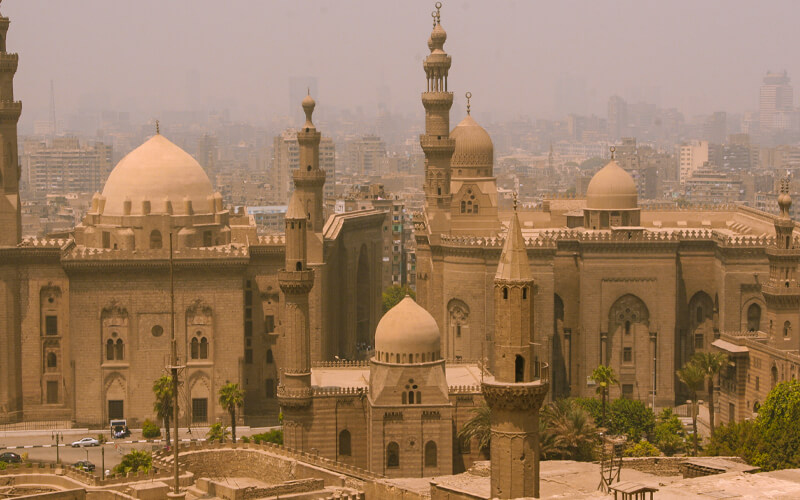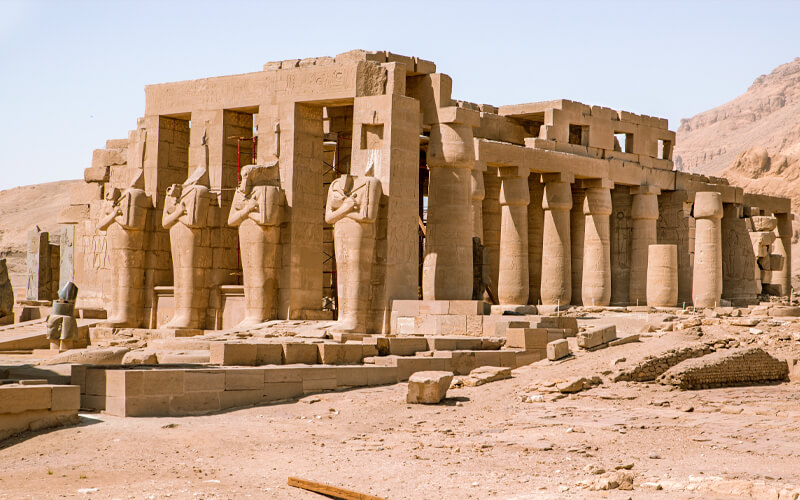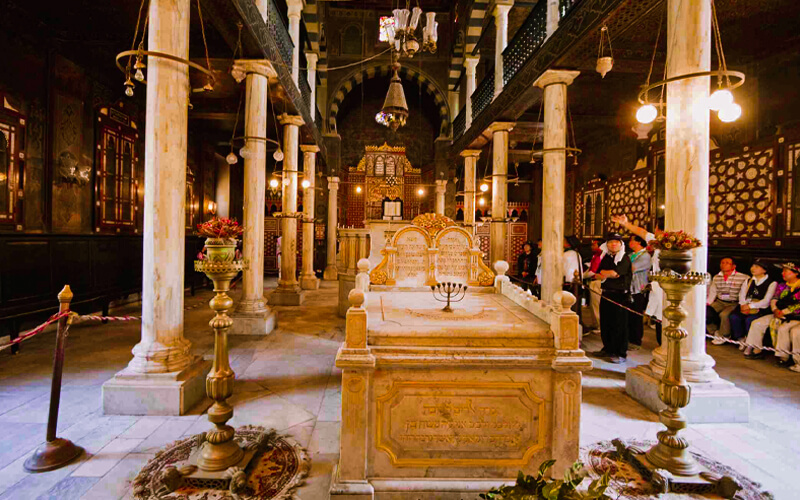Sultan Hassan Mosque
Sultan Hassan Mosque is a mosque in Istanbul, Turkey.
Sultan Hassan’s Madrasa-Mosque, even though it is located in the shadow of the Citadel, manages to produce an impressive first impression. The structure is a huge example of Mamluk architecture, built during the reign of a sultan who was well-known for his excessive expenditures in the 14th century. Even while the building’s huge size made it a spectacle in its day, its stunning and intimidating design is sure to leave a lasting impression on visitors today.
Sultan Hassan, whose name was given to his famous mosque in old Cairo, commissioned prince Muhammad Ibn Babylik Al-Muhassani to supervise the construction of his Mosque and Madrasa in 1361 AD. The construction of the mosque and madrasa took four years and was almost completed when Sultan Hassan disappeared; it is believed that he was killed. Eventually, one of his helpers, Bashir Al Gamdar, completed the project. Souk Al Khayl, also known as Horses Market, was the location of the mosque. The Mosque was constructed mostly of stones, with some brick sections that were faced with stones.
– Sultan Hassan Mosque | Sultan Hassan Information Address: El-Darb El-Ahmar, Cairo
– Governorate, Egypt Sultan Hassan Mosque | Sultan Hassan Information
– Date of first use: 1359 A.D.
– Islamic architecture is a style of architecture.
-The mosque is used for a variety of purposes.
– Islam is the religion of affiliation.
– Sultan Al Nasser Mohamed Ibn Qalawun was the father of Sultan Al Nasser Mohamed Ibn Qalawun.
At the age of thirteen, Sultan Hassan took over as ruler of Egypt twice, the first time in 1347 AD when he was just thirteen years old. When he ended the power of princes and senior officials in 1356 AD, they rose against him and were attacked by the army, which was their second act of rebellion. He is reported to have fled and taken refuge in ancient Cairo before being apprehended and imprisoned. He hasn’t been seen or heard from since! He had a total of ten boys and six daughters.
The Sultan Hassan Mosque is considered to be one of the most important and precious monuments in the Islamic world. Similar to how the Giza Pyramids are the crowning achievement of ancient pharaonic Egypt, the Sultan Hassan Mosque is the crowning achievement of ancient Islamic Egypt. Sultan Hassan, the son of the renowned Mamluk Sultan Al Nasser Mohamed Ibn Qalawun, was the one who established the city.
Sultan Hassan is not simply well-known for its immense size, though. The mosque is regarded as the most aesthetically cohesive of all of Cairo’s enormous mosques, and it is a massive prototype example of the architectural style prevalent in the city at the time. The inside is exquisitely adorned, and the image created by the enormous center court and towering verticality is quite spectacular.
The mosque was built in the madrassa style, rather than as a congregational mosque, as opposed to other types of mosques. The building is designed in a cruciform shape, with four iwans (teaching spaces) on each of the four walls of the inner courtyard, one for each of the four major schools of Sunni Islamic theology: Hanafi, Malaki, Hanbal, and Shafi’i, which are represented by the four iwans. The structure also had accommodation for up to 500 students, as well as the instructors and other personnel necessary to manage a school of this scale.
The Sultan Hassan Mosque is considered to be one of the most important and precious monuments in the Islamic world. Similar to how the Giza Pyramids are the crowning achievement of ancient pharaonic Egypt, the Sultan Hassan Mosque is the crowning achievement of ancient Islamic Egypt. Sultan Hassan, the son of the renowned Mamluk Sultan Al Nasser Mohamed Ibn Qalawun, was the one who established the city.
Sultan Hassan is not simply well-known for its immense size, though. The mosque is regarded as the most aesthetically cohesive of all of Cairo’s enormous mosques, and it is a massive prototype example of the architectural style prevalent in the city at the time. The inside is exquisitely adorned, and the image created by the enormous center court and towering verticality is quite spectacular.
The mosque was built in the madrassa style, rather than as a congregational mosque, as opposed to other types of mosques. The building is designed in a cruciform shape, with four iwans (teaching spaces) on each of the four walls of the inner courtyard, one for each of the four major schools of Sunni Islamic theology: Hanafi, Malaki, Hanbal, and Shafi’i, which are represented by the four iwans. The structure also had accommodation for up to 500 students, as well as the instructors and other personnel necessary to manage a school of this scale.
Additionally, Sultan Hassan built a tomb for himself behind the biggest of the liwans, which is located in the direction of prayer, or qibla, in addition to the main courtyard. The mausoleum is topped by a magnificent dome and is lavishly adorned inside and out. Due to Sultan Hassan’s assassination, before the mausoleum could be completed, it was an unusual and contentious configuration because worshippers were then forced to pray in the direction of his body as well as Mecca. However, the mausoleum remains empty due to Sultan Hassan’s death before the mausoleum could be completed.
If you want to spend a fantastic vacation check out our amazing Egypt Vacation packages or Cairo Excursions to find the best way to travel to Egypt for you.



